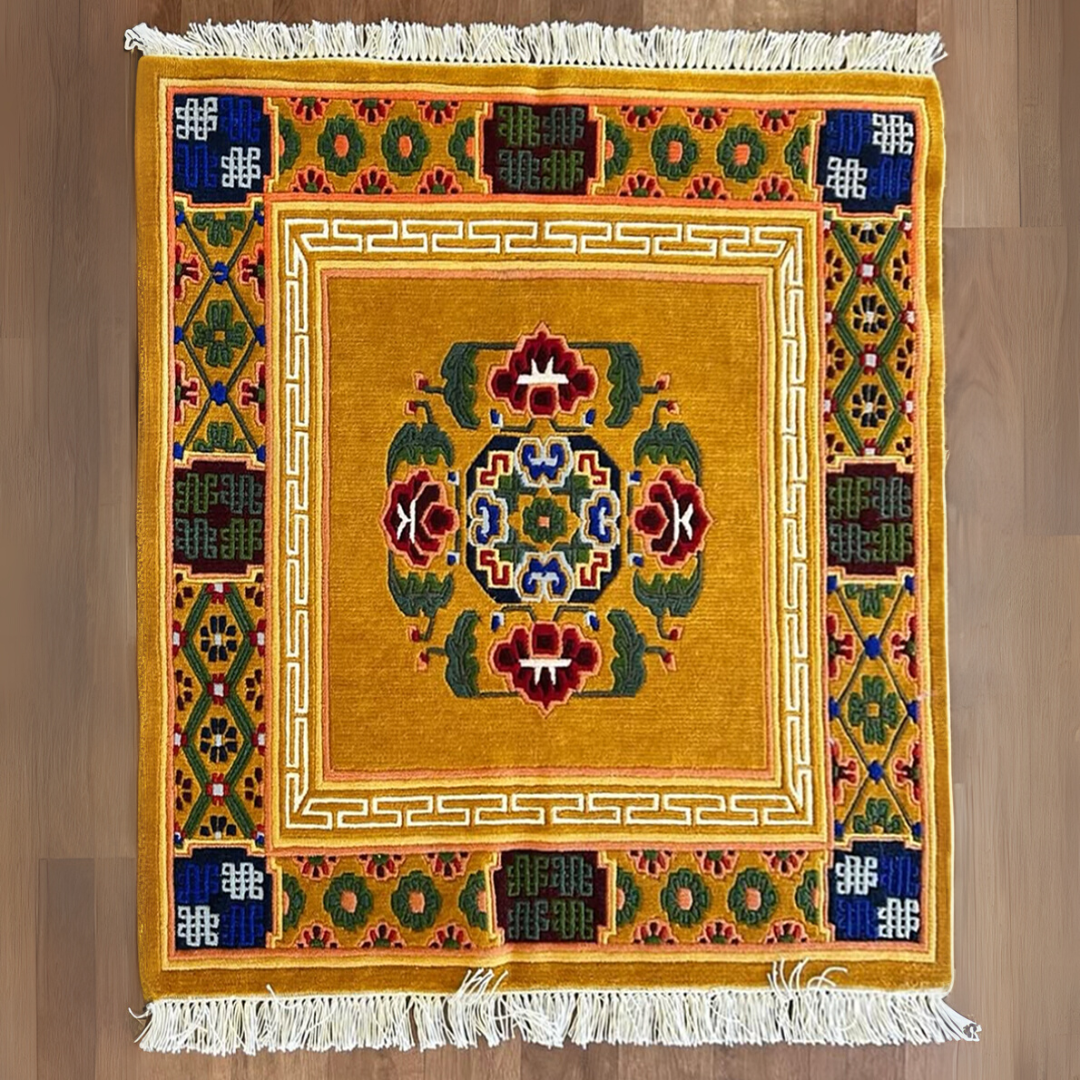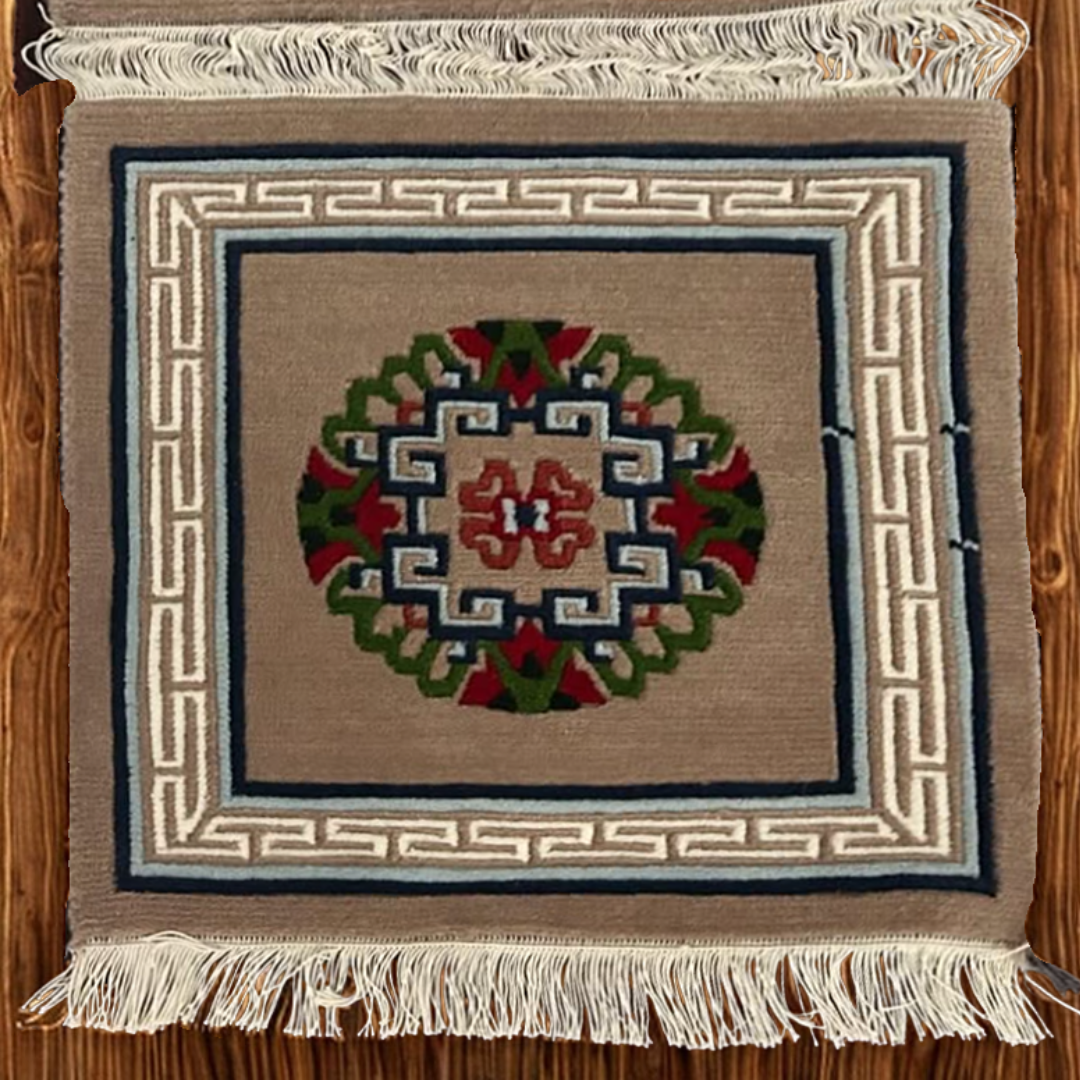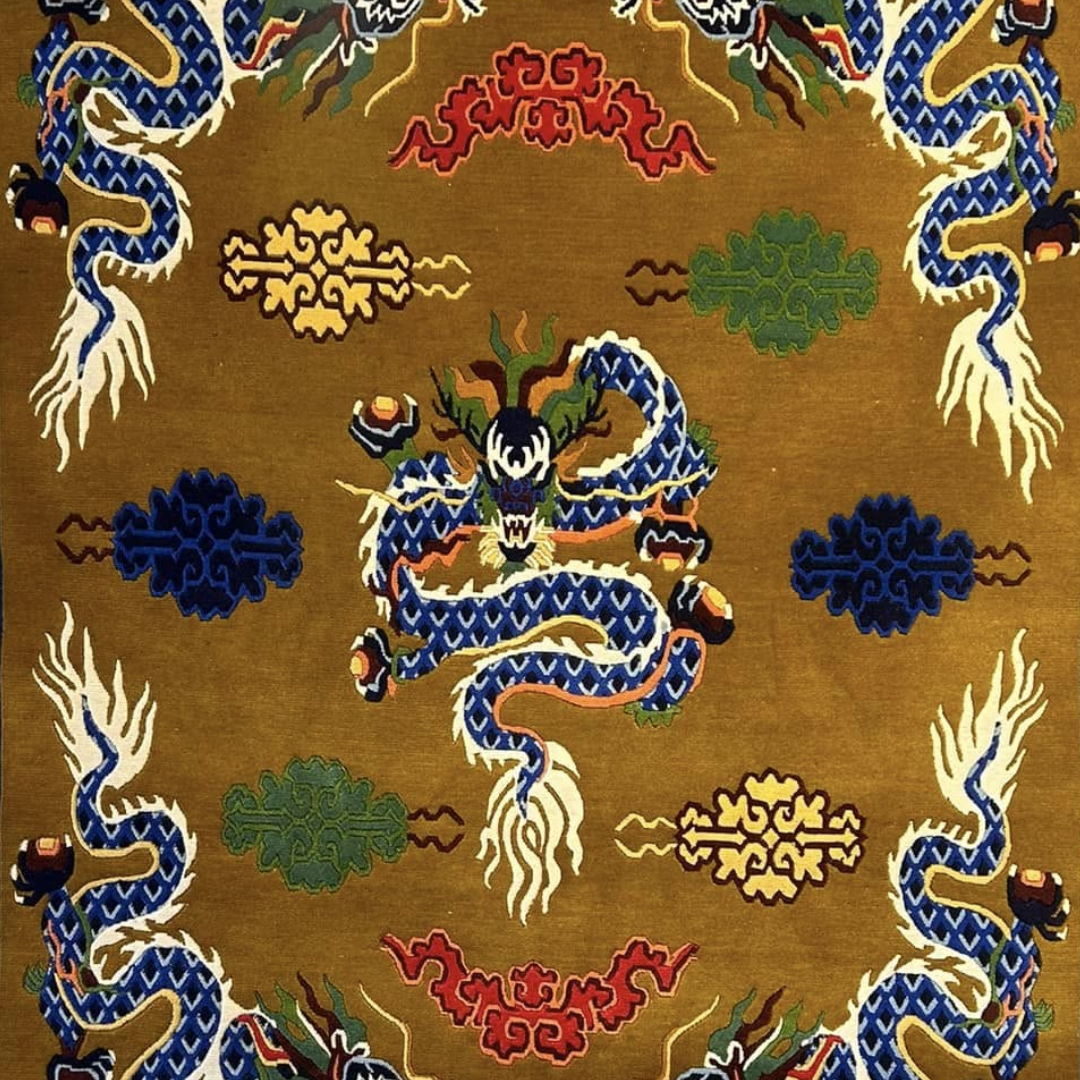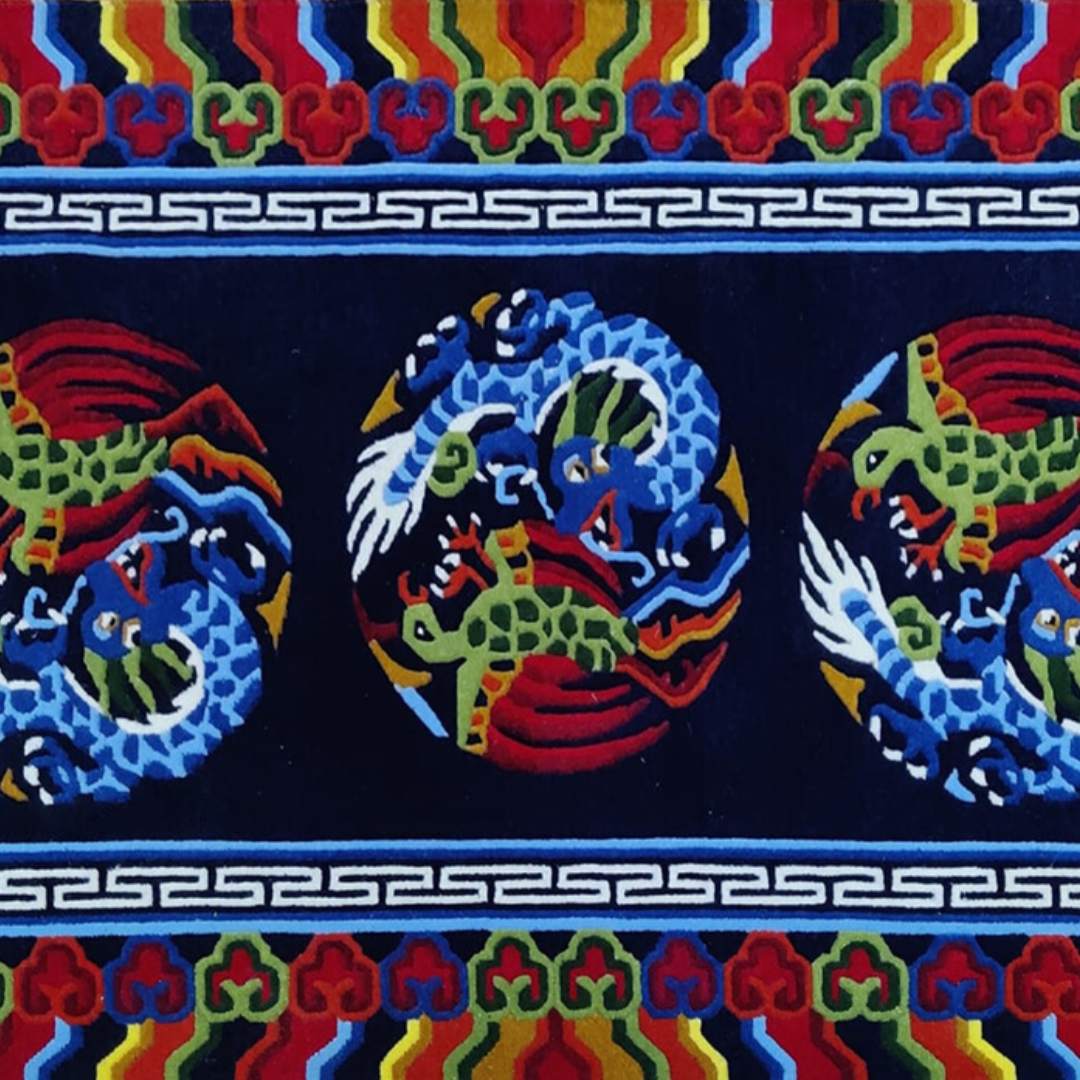
Map Loading...
Khabdan
Ladakh
Khabdan carpets, meticulously crafted in Ladakh, stand as a testament to the region's enduring artistic traditions. These pile carpets are primarily woven on vertical looms using a technique that produces a dense weave of 48 knots per square inch, offering remarkable warmth and resilience—essential traits for the harsh Himalayan winters. Artisans, often women from Ladakhi households or Tibetan settlements, employ a process where handspun wool is knotted around iron rods, then cut and compacted to create a plush, raised surface.
Traditional khabdans are typically distinguished by bold borders and symbolic central motifs. Designs draw inspiration from Mahayana Buddhist iconography, featuring auspicious symbols like the lotus, conch, endless knot, and the eight-spoked wheel, as well as dragons, snow lions, and geometric patterns. The deep reds and oranges used often signify good fortune and spiritual significance, especially in pieces intended for monasteries.
Historically, khabdan weaving has survived as one of Ladakh’s few continuously practiced crafts, persisting through generations despite shifting market demands. Their production is concentrated in areas like Choglamsar and Leh, where both Tibetan refugees and local communities maintain the tradition. While khabdans are primarily made for domestic use or monastery rituals, contemporary artisans now create pieces for collectors and global buyers, adapting motifs and colors to modern tastes without losing the essence of their heritage.
Picture courtesy: Ladakh Carpet and Rugs
Material
Cotton, Wool
Technique
Hand Knotting
Showcase




